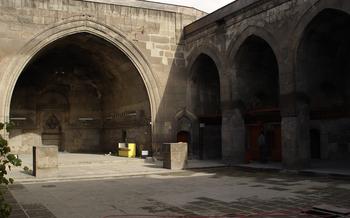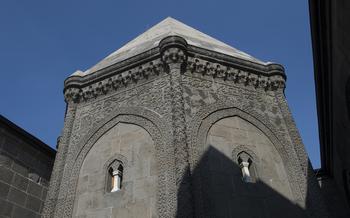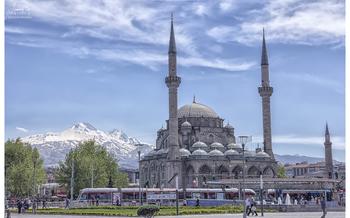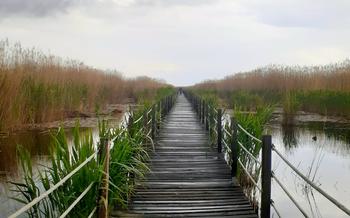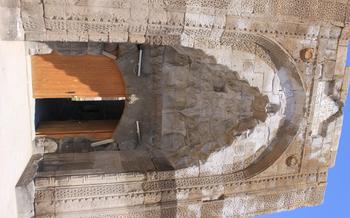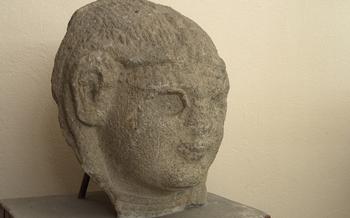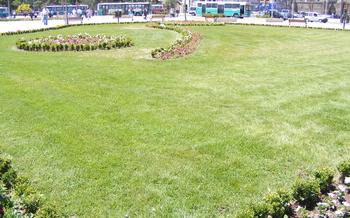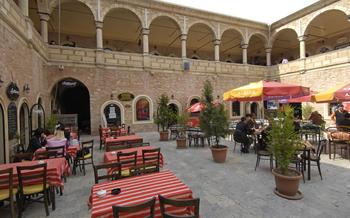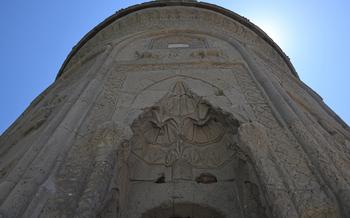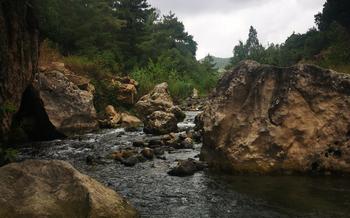
Seljuk Caravanserais in and around Kayseri
- Unveiling Kayseri's Seljuk Caravanserais: A Journey into History
- Sultan Han: A Majestic Gateway to the Past
- The Allure of Develi Caravanserai: A Hidden Gem
- Tracing the Silk Road: The Historical Significance of Caravanserais
- Architectural Marvels: A Blend of Form and Function
- Exploring the Courtyard: The Heart of the Caravanserai
- Unveiling the Secrets of the Caravanserai's Interior
- Sultakhan Caravanserai: A Culinary Adventure
- The Caravanserai Experience: A Journey Through Time
- Exploring the Environs: Beyond the Caravanserais
- A Haven for History Buffs: The Kayseri Museum
- Unveiling the Architectural Wonders of the Hunat Hatun Complex
- A Culinary Odyssey: Exploring Kayseri's Delights
- The Mystical Mount Erciyes: A Natural Wonder
- Insider Tip: Unveiling the Hidden Treasures of Kayseri
Unveiling Kayseri's Seljuk Caravanserais: A Journey into History
Kayseri, a city in central Turkey, boasts a rich history and cultural heritage dating back to ancient times. Among its many treasures are the Seljuk caravanserais, architectural marvels that offer a glimpse into the grandeur of the Silk Road era. These caravanserais served as resting and trading places for merchants, travelers, and pilgrims traversing the ancient trade routes. Their strategic location on the Silk Road transformed Kayseri into a vibrant hub for trade and cultural exchange, leaving an indelible mark on the city's history and identity.
The legacy of the Seljuk Empire, which ruled over a vast territory in the Middle East and Anatolia from the 11th to the 14th century, is deeply intertwined with the development of caravanserais. These structures were not merely functional buildings but also symbols of the Seljuk Empire's wealth, power, and influence. Their construction reflected the empire's commitment to facilitating trade and promoting cultural interaction, contributing to the region's overall prosperity.
Sultan Han: A Majestic Gateway to the Past
In the heart of Anatolia, nestled amidst the bustling city of Kayseri, lies Sultan Han, a testament to the grandeur of the Seljuk Empire. As the largest and most impressive caravanserai in Turkey, Sultan Han stands as a majestic gateway to the past, inviting travelers to step into a world of history and wonder.
Strategically positioned along the Silk Road, this architectural marvel served as a vital hub for trade and cultural exchange. Its grand portal, adorned with intricate carvings and inscriptions, welcomes visitors into a spacious courtyard, where caravans of camels and merchants once gathered. The courtyard, surrounded by two-storied arcades, provided shelter and accommodation for weary travelers, their animals, and their precious goods.
Sultan Han's architectural grandeur is evident in every detail. Its massive stone walls, reinforced with brick, have withstood the test of time, preserving the caravanserai's original splendor. The use of domes, arches, and vaults showcases the ingenuity of Seljuk builders, creating a harmonious blend of form and function.
Today, Sultan Han has been meticulously restored and transformed into a museum, inviting visitors to explore its rich history and architectural wonders. As you wander through its chambers, you can almost hear the echoes of the past, the bustling sounds of trade, and the stories of countless travelers who passed through these gates. Sultan Han remains a living testament to the enduring legacy of the Seljuk Empire, a symbol of their architectural prowess and their commitment to fostering trade and cultural exchange along the Silk Road.
The Allure of Develi Caravanserai: A Hidden Gem
Nestled in the heart of the picturesque town of Develi, the Develi Caravanserai stands as a testament to the rich history and architectural prowess of the Seljuk Empire. Its serene setting, away from the bustling city centers, offers visitors a tranquil retreat, inviting them to delve into the captivating allure of this hidden gem.
Unique architectural elements set this caravanserai apart, including a mosque and a hammam, which catered to the spiritual and physical needs of weary travelers. Exquisite craftsmanship adorns the caravanserai's facade, showcasing intricate carvings and decorative details that reflect the Seljuk's mastery of stonework.
In a remarkable transformation, the Develi Caravanserai has been meticulously restored and converted into a charming boutique hotel, seamlessly blending modern comforts with historical authenticity. Visitors can immerse themselves in the ambiance of bygone eras as they wander through the caravanserai's courtyard, adorned with traditional motifs and surrounded by cozy rooms that once served as travelers' chambers.
The Develi Caravanserai offers a unique opportunity for those seeking a tranquil escape, away from the hustle and bustle of urban life. Its serene atmosphere, combined with the attentive service and modern amenities, creates an ideal haven for relaxation and rejuvenation. Whether exploring the caravanserai's rich history or simply basking in its tranquil ambiance, visitors to Develi are sure to be captivated by its timeless charm and warm hospitality.
Tracing the Silk Road: The Historical Significance of Caravanserais
Caravanserais played a pivotal role in facilitating trade and cultural exchange along the Silk Road, a network of interconnected trade routes that spanned from China to the Mediterranean Sea. These bustling marketplaces served as resting points for merchants, travelers, and their animals, providing shelter, food, and supplies. The exchange of goods and ideas between people from diverse cultures and backgrounds led to a vibrant and cosmopolitan atmosphere. The Silk Road not only facilitated the flow of goods and services but also fostered cultural diffusion, contributing to the development of art, architecture, literature, and music. As a result, the Silk Road emerged as a catalyst for global connectivity, leaving a lasting impact on the history and development of civilizations across Eurasia.
Architectural Marvels: A Blend of Form and Function
The caravanserais of Kayseri stand as testaments to the ingenuity and architectural prowess of the Seljuk Empire. These structures were meticulously designed to cater to the needs of travelers, merchants, and their animals. The builders employed a combination of stone, brick, and timber, creating sturdy and durable edifices. Islamic architectural elements, such as domes and arches, were incorporated to add an air of grandeur and elegance. Over time, caravanserai architecture underwent a process of evolution, adapting to changing needs and preferences. Each caravanserai possesses unique features, reflecting the diverse influences that shaped Seljuk architecture.
Exploring the Courtyard: The Heart of the Caravanserai
The courtyard, the central hub of any caravanserai, played a crucial role in the daily life and functioning of these remarkable structures. It served as a bustling meeting ground for traders, travelers, and pilgrims from diverse backgrounds, creating a vibrant atmosphere of commerce and cultural exchange. The courtyard was designed to cater to the needs of weary travelers, providing them with a safe and sheltered space to rest, socialize, and conduct business.
Surrounding the courtyard were a multitude of shops, where merchants displayed their wares, offering a wide array of goods from exotic spices to intricate textiles. The air was filled with the sounds of haggling and bartering, as traders sought the best deals for their goods. The courtyard also housed stables, where travelers could tend to their animals, ensuring their well-being during their long journeys. Additionally, kitchens were often located within the courtyard, providing sustenance to the caravanserai's inhabitants.
Beyond its practical functions, the courtyard also served as a social hub, where travelers from different regions and cultures could interact and share stories. It was a place where ideas and customs were exchanged, contributing to the rich cultural tapestry of the Silk Road. Evenings in the courtyard were often filled with music, storytelling, and performances, creating a lively and entertaining atmosphere.
In essence, the courtyard was the beating heart of the caravanserai, a place where commerce, culture, and community converged, leaving an indelible mark on the history and legacy of these ancient structures.
Unveiling the Secrets of the Caravanserai's Interior
The interiors of the Seljuk caravanserais in and around Kayseri are a testament to the exquisite craftsmanship and attention to detail that characterized the Seljuk period. Every nook and cranny reveals intricate designs, decorative tiles, and intricate carvings that showcase the artistic prowess of the era. The use of calligraphy, with verses from the Quran and poetic inscriptions, adds a spiritual dimension to these spaces.
The caravanserais often feature iwans, vaulted chambers with arched entrances, which serve as communal gathering spaces or private chambers for travelers. Niches and alcoves provide functional storage areas or display spaces for decorative objects. The network of rooms and corridors, some leading to hidden chambers or secret passages, creates a sense of mystery and intrigue.
The caravanserai's interiors were designed to provide comfort and convenience to travelers. The rooms, though modest, were equipped with basic amenities such as beds, carpets, and sometimes even fireplaces. The courtyards, with their central fountains or pools, offered a place for relaxation and refreshment. The presence of kitchens allowed travelers to prepare their own meals or purchase food from the caravanserai's vendors.
Exploring the interiors of the Seljuk caravanserais is like embarking on a journey through time. The intricate details, the blend of functionality and aesthetics, and the aura of history combine to create an immersive experience that transports visitors back to the era of the Silk Road.
Sultakhan Caravanserai: A Culinary Adventure
Amidst the ancient walls of the Sultakhan Caravanserai, nestled in the heart of Kayseri, a culinary adventure awaits. This historic caravanserai has been transformed into a culinary haven, offering visitors a unique and authentic Turkish dining experience. The onsite restaurant, with its warm and inviting ambiance, beckons travelers to savor the flavors of Anatolia.
The menu at Sultakhan Caravanserai is a testament to the region's rich culinary heritage. The chefs, masters of Turkish cuisine, prepare each dish with precision and passion, using fresh, locally sourced ingredients. From succulent kebabs grilled to perfection to aromatic stews simmering with spices, the flavors of Turkey come alive at this special restaurant.
Diners can indulge in traditional Turkish dishes such as "kuru fasulye" (stewed white beans), "sulu köfte" (meatballs in tomato sauce), and "lahmacun" (Turkish pizza). For a taste of Kayseri's specialty, try the "mantı," delicate dumplings filled with minced meat and topped with garlic yogurt sauce. Each dish is a culinary masterpiece, showcasing the vibrant flavors and diverse culinary traditions of Turkey.
As you savor the delicious food, surrounded by the caravanserai's historic charm, you'll feel transported back in time. The soft glow of lanterns illuminates the centuries-old architecture, creating an enchanting atmosphere that enhances the dining experience. Whether you're a food enthusiast, a history buff, or simply seeking a unique adventure, Sultakhan Caravanserai offers an unforgettable culinary journey that will leave you craving for more.
The Caravanserai Experience: A Journey Through Time
Staying in a restored caravanserai is an immersive experience that transports you back in time. Imagine stepping into a world of bustling trade, cultural exchange, and the vibrant energy of travelers from diverse backgrounds. The caravanserai's intricate architecture, with its courtyards, iwans, and vaulted chambers, creates a unique atmosphere that invites you to explore and discover.
As you wander through the caravanserai's corridors, you can almost hear the echoes of conversations, laughter, and the clinking of coins. The intricate details of the interior, from the decorative tiles to the carved niches, tell stories of craftsmanship and artistry. You can imagine the weary travelers finding respite within these walls, sharing stories and experiences from far-off lands.
Staying in a caravanserai is not just about the physical experience; it's about connecting with history and culture. It's an opportunity to step back in time and immerse yourself in the world of the Seljuk Empire, a time when trade and cultural exchange flourished along the Silk Road. The caravanserai experience is a journey through time, a chance to create lasting memories in an extraordinary setting.
Exploring the Environs: Beyond the Caravanserais
While the Seljuk caravanserais are undoubtedly the highlights of Kayseri, the city and its surroundings offer a wealth of additional attractions to enrich your travel experience. History buffs will delight in exploring the Kayseri Museum, which houses an extensive collection of artifacts from the Seljuk period. The Hunat Hatun Complex, with its stunning mosque, medrese, and tomb, is another architectural marvel not to be missed.
For those seeking outdoor adventures, Mount Erciyes, an extinct volcano, offers breathtaking scenery and opportunities for hiking, skiing, and enjoying panoramic views. The Cappadocia region, with its unique rock formations and hot air balloon rides, is also within easy reach of Kayseri.
To truly immerse yourself in Turkish culture, be sure to explore the local cuisine. Kayseri is renowned for its delicious dishes, such as Kayseri manti (a type of Turkish ravioli) and pastırma (cured beef). Visit traditional markets and bazaars to sample local produce, spices, and sweets.
By venturing beyond the caravanserais, you'll gain a deeper appreciation for the rich cultural heritage and natural beauty of Kayseri, creating a well-rounded and unforgettable travel experience.
A Haven for History Buffs: The Kayseri Museum
The Kayseri Museum stands as a testament to the rich history and cultural heritage of the region. Within its walls, visitors will find an extensive collection of artifacts that provide a glimpse into the Seljuk period, a time when Kayseri flourished as a vibrant center of trade and culture. The museum's collection includes intricate Seljuk handicrafts, ceramics, and textiles, each piece a testament to the artistry and craftsmanship of the era.
Moreover, the museum houses a wealth of information about the Seljuk Empire, its rulers, and its lasting impact on the region. Visitors can delve into the history of the Seljuks, learn about their military conquests, and admire their architectural achievements. The museum's exhibits provide a comprehensive overview of Seljuk culture, offering insights into their way of life, their customs, and their religious beliefs.
For those seeking a deeper understanding of Turkey's rich past, the Kayseri Museum is an essential destination. Through its collection of artifacts and its informative exhibits, the museum offers visitors a unique opportunity to explore the legacy of the Seljuk Empire and its contributions to the region's cultural identity.
Unveiling the Architectural Wonders of the Hunat Hatun Complex
Nestled in the heart of Kayseri, the Hunat Hatun Complex stands as a testament to the architectural prowess of the Seljuk Empire. Comprising a mosque, a medrese (Islamic school), and a tomb, this magnificent complex showcases the intricate carvings, tilework, and decorative elements that are hallmarks of Seljuk architecture.
The mosque, the centerpiece of the complex, features a stunning prayer hall with a mihrab (niche indicating the direction of Mecca) adorned with intricate tilework and calligraphy. The medrese, once a center of learning, boasts an impressive portal and a courtyard surrounded by student cells. The tomb, believed to be the resting place of Hunat Hatun, the wife of a Seljuk ruler, is adorned with exquisite carvings and calligraphy that pay tribute to her memory.
Exploring the Hunat Hatun Complex is a journey through time, allowing visitors to witness the architectural brilliance of the Seljuk era. The complex's harmonious blend of religious, educational, and funerary functions highlights the multifaceted nature of Seljuk society. A visit to this remarkable site is a must for anyone seeking to delve into the rich history and cultural heritage of Kayseri.
A Culinary Odyssey: Exploring Kayseri's Delights
Kayseri's culinary traditions are a delectable blend of Turkish and Seljuk influences, offering a tantalizing array of flavors and aromas. Savor the city's signature dish, Kayseri manti, delicate dumplings filled with minced lamb and yogurt sauce, a true testament to the region's culinary prowess. Indulge in the smoky delight of pastırma, cured and air-dried beef, a local specialty with a rich history.
Explore the vibrant traditional markets and bazaars, a feast for the senses where you can haggle for fresh produce, spices, and local delicacies. Immerse yourself in the aromas of freshly baked bread, tempting pastries, and the sweet fragrance of Turkish delight.
Kayseri's culinary journey extends beyond its traditional fare. Experiment with modern interpretations of Turkish cuisine at innovative restaurants, where chefs blend traditional flavors with contemporary techniques. Delight in the fusion of East and West, as local ingredients are elevated with international influences.
From street food stalls to fine dining establishments, Kayseri's culinary scene is a tapestry of tastes and experiences. Embark on a culinary odyssey, savoring the diverse flavors that define this vibrant city.
The Mystical Mount Erciyes: A Natural Wonder
Kayseri is not only home to historical and cultural treasures but also boasts natural wonders that captivate the senses. Among them, Mount Erciyes stands as a majestic symbol of the city's beauty and diversity. This extinct volcano, towering over the landscape, offers a breathtaking spectacle that leaves visitors in awe.
For those seeking an exhilarating adventure, Mount Erciyes presents a range of outdoor activities that cater to every taste. Whether you're an avid hiker or a passionate skier, the mountain's slopes and trails offer endless possibilities for exploration and adrenaline-pumping experiences. As you ascend the mountain, the panoramic views that unfold before you are simply mesmerizing, revealing a tapestry of nature's wonders.
Reaching the summit of Mount Erciyes is an accomplishment that will stay etched in your memory forever. From this vantage point, the world seems to stretch out endlessly, with the city of Kayseri nestled at the foot of the mountain, and the vastness of the surrounding landscape extending as far as the eye can see. The sense of tranquility and awe you'll experience at this moment is truly unparalleled.
Whether you choose to conquer the mountain on foot or glide down its slopes on skis, Mount Erciyes promises an unforgettable outdoor adventure. Embrace the challenge, soak in the beauty, and create memories that will last a lifetime in this natural paradise.
Insider Tip: Unveiling the Hidden Treasures of Kayseri
Beyond the well-trodden tourist paths, Kayseri holds a treasure trove of hidden gems waiting to be discovered. Venture off the beaten track and explore the lesser-known historical sites and museums that reveal the city's rich past. Engage with local artisans and craftsmen to learn about traditional crafts, such as carpet weaving and pottery, and witness their skills firsthand. Immerse yourself in the vibrant local culture by visiting traditional markets and bazaars, where you can haggle for unique souvenirs and savor the flavors of delicious street food. Embrace the opportunity to connect with the friendly locals, who are always eager to share their stories and insights about their beloved city. By uncovering the hidden treasures of Kayseri, you'll create a truly authentic and immersive travel experience that will leave you with lasting memories.
